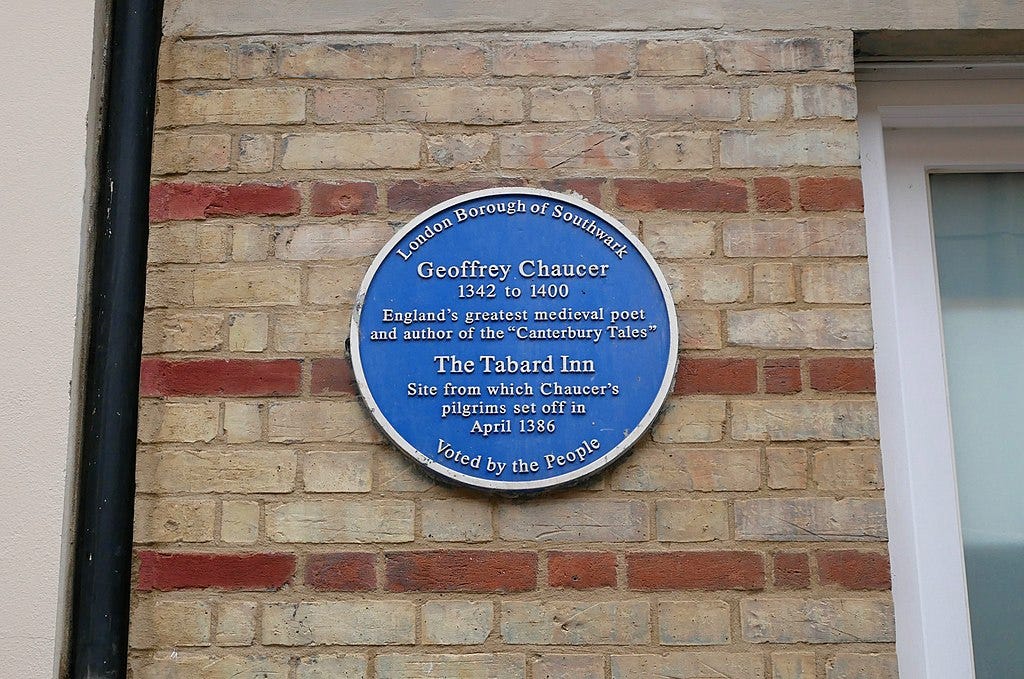Five... fictional historic London pubs
Where our imaginary ancestors whet their fictional whistles
Hi and welcome to your weekend newsletter…

This edition’s a handful of the greatest pubs from London’s fictional history — a guest post from
, author of the fantastic Croydonopolis, out now in paperback.The Tabard — from The Canterbury Tales by Geoffrey Chaucer, c. 1387
‘…Bifel that in that season on a day, In Southwerk at the Tabard as I lay, Redy to wenden on my pilgrymage, To Caunterbury with ful devout corage, At nyght was come into that hostelrye, Wel nyne and twenty in a compaignye, Of sondry folk, by aventure yfalle, In felaweshipe, and pilgrimes were they alle, That toward Caunterbury wolden ryde; The chambres and the stables weren wyde, And well we weren esed atte beste…’
This is the first stop-off point for the pilgrims in Chaucer's The Canterbury Tales, where, in this 'gentile hostelrye', our 29 chums quaff wine and chomp on pub grub while getting their storytelling competition under way (the prize is a slap-up meal at the same pub on the return leg).
The Tabard was a real medieval inn, and though it’s no longer standing, it's celebrated with a plaque in Talbot Yard. Due to its position as the gateway to the City, Borough was THE stopover destination for travellers, and by the 18th century, had become a veritable chain of coaching inns.

The Proles pub — from 1984 by George Orwell, 1949
‘…So long as they [the Proles] continued to work and breed, their other activities were without importance. Left to themselves, like cattle turned loose upon the plains of Argentina, they had reverted to a style of life that appeared to be natural to them, a sort of ancestral pattern... Heavy physical work, the care of home and children, petty quarrels with neighbors, films, football, beer and above all, gambling filled up the horizon of their minds. To keep them in control was not difficult…’
Widely believed to be inspired by The Newman Arms, on Rathbone Place (also the setting for the murder and crime scene investigation in the opening scenes of Michael Powell’s 1959 serial killer film Peeping Tom), the Proles pub still probably isn’t the best-known of Orwell’s fictional pubs. That honour goes to The Moon Under Water, an essay imagining his archetypally perfect pub. We especially like that the Moon Under Water sells aspirins and stamps, serves beer in "pleasant strawberry-pink china" and possesses a "fairly large garden" which "allows whole families to go there instead of Mum having to stay at home and mind the baby while Dad goes out alone." It also has a snack counter where you can get liver-sausage sandwiches, mussels and cheese, as well as an upstairs dining room serving a cut off the joint, two vegetables and boiled jam roll. Sounds like the ideal place to work up one hell of a fictional hangover.




